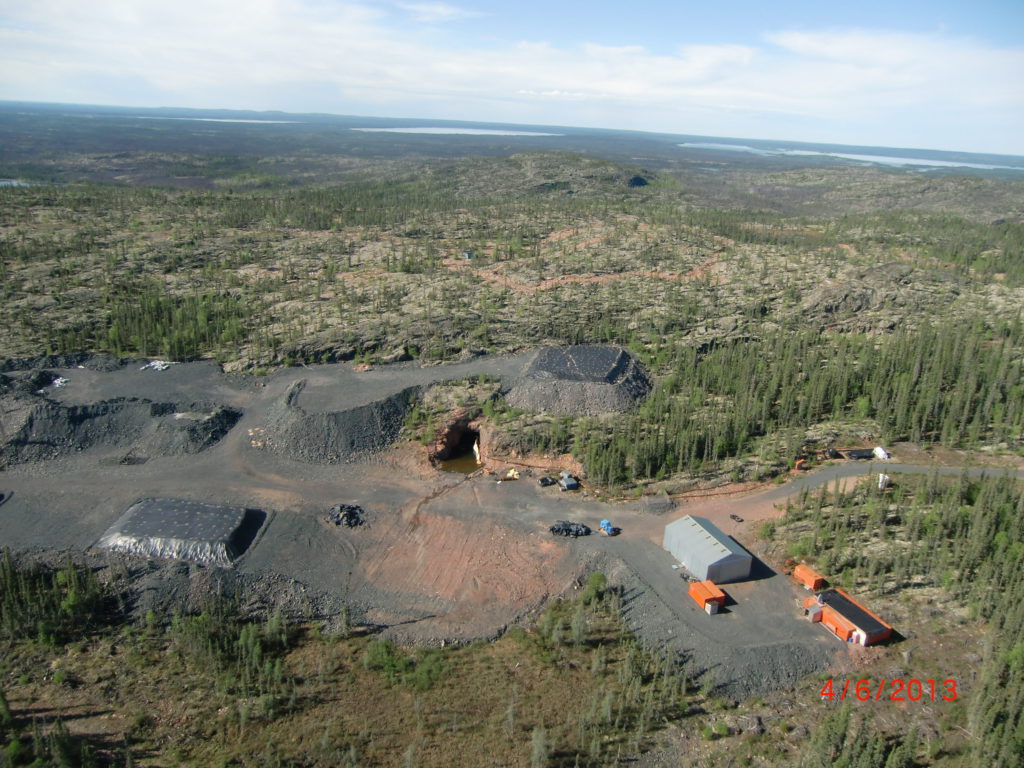
Fortune Minerals (TSX: FT) has released results from 2021 drilling on its wholly owned NICO critical minerals property in Canada’s Northwest Territories, including the confirmation of a new mineralized zone.
The NICO project consists of a proposed open-pit and underground mine, mill, and concentrator in the NWT, and a hydrometallurgical refinery in Alberta’s Industustrial Heartland northeast of Edmonton to process metal concentrates into value-added products.
Mineral reserves for the NICO cobalt-gold-bismuth-copper deposit are estimated at 33.1 million tonnes containing 37.3 million kilograms of cobalt, 1.1 million ounces of gold, 46.3 million kilograms of bismuth and 12.3 million kilograms of copper.
The 2021 drill program was carried out order to test four prospects that had been identified in earlier geophysical surveys and a 1997 drill program, which had identified multiple intercepts in five holes with gold grades exceeding 1 g/t over 3-metre core lengths with significant cobalt and bismuth values.
Recent drilling successfully confirmed continuity of cobalt-gold-bismuth and local copper mineralization in the Peanut Lake zone, located 800 metres southeast of the NICO deposit, and also identified a potential east strike extension of the deposit.
A total of 13 cored drill holes totalling 2,482.31 metres were completed by Fortune in 2021, supported in part by two Mineral Incentive Program grants from the NWT government.
A new hole (21-008) was drilled to test the continuity of mineralization in a 135-metre wide gap between two holes drilled in 1997, and intersected three significant intervals of mineralization, one of which returned 3.17 metres averaging 0.423% cobalt, 0.554 g/t gold and 0.369% bismuth at a depth of 28.7 metres, including 1.05 metres, grading 0.995% cobalt, 0.247 g/t gold and 0.562% bismuth. This hole correlated well with the earlier intercepts from 1997.
Two holes (21-009 and 21-014) tested the strike continuity of the Peanut Lake zone east and west of the aforesaid holes, respectively and identified multiple zones of lower-grade cobalt-gold mineralization. These, together with the results of the five 1997 drill hole intercepts, indicate continuity of economically interesting mineralization over a minimum undelimited 400-metre strike length.
Six holes were drilled to test for an east strike extension of the NICO deposit beyond a fault that was previously believed to terminate the east end of the deposit. Three holes (21-003, 21-015 and 21-016) tested for north lateral and depth displacement of the deposit beyond the fault and intersected economically interesting grades over narrow widths. The three holes drilled to test for a south lateral displacement of the deposit did not intersect any significant mineralization.
Two drill holes tested the strike continuity of grades previously identified in the Ralph zone in 1997 and one drill hole tested the continuity of copper mineralization identified in the Road Cut zone at depth. None of these intersected economically interesting mineralization.